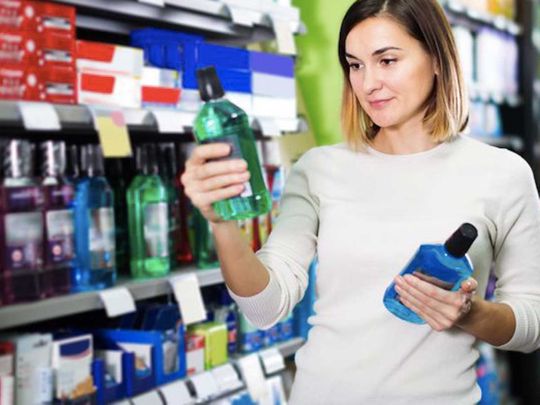
Like millions of others around the world, Gulf News Foreign Correspondent Mick O’Reilly is currently under Covid-19 lockdown. This is what life is like in social isolation in Ireland, where there are strict rules about who is allowed out, where, and under limited circumstances.
DAY 47: Friday May 15, 9am
IS THERE ANYBODY OUT THERE?
CAN MOUTHWASH REDUCE COVID-19 TRANSMISSION RISK?
CALL FOR URGENT RESEARCH INTO EFFECTIVENESS OF SWISHING
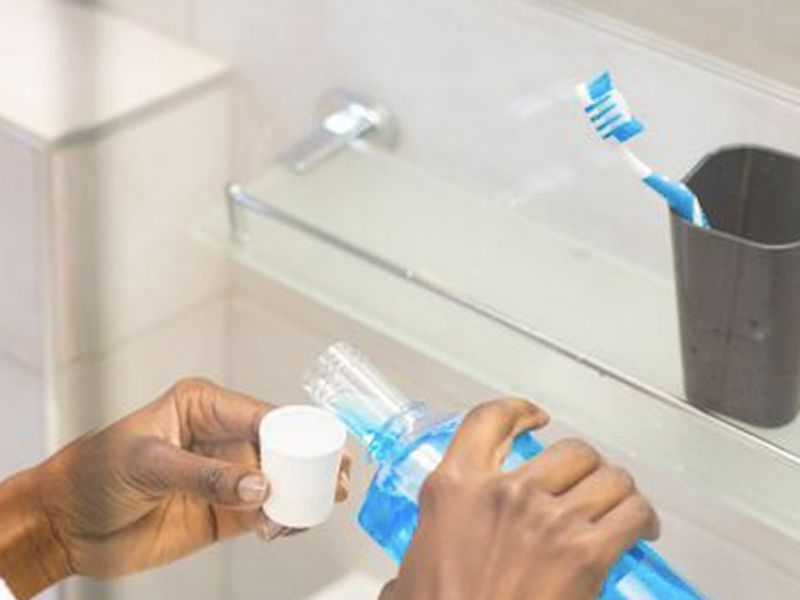
Could stopping the spread of COVID-19 really be as simple as swishing with mouthwash? I hate the stuff, but if it offers protection against coronavirus, I’ll glad swoosh and spit as much as it takes.
Why? Because scientists are calling for urgent research into whether normal mouthwash, readily available in stores, could be effective in reducing coronavirus transmission in the early stages of infection.
The research, led by Cardiff University, examined whether mouthwash could damage the outer lipid or fatty membrane that envelopes the virus – and therefore kill it in its tracks.
Previous studies had shown that mouthwashes which contain low amounts of ethanol, povidone-iodine or cetylpyridinium could interfere with fatty membranes around other viruses.
This latest research suggests that COVID-19 might be similarly affected. This has prompted the team to call for further investigation and research.
The next steps would include examining both existing and new formulations of mouthwash in labs and then in clinical trials, followed by population-based trials.
GARGLING NEEDS TO BE CONSIDERED
“Safe use of mouthwash – as in gargling – has so far not been considered by public health bodies in the UK,” says lead author Professor Valerie O’Donnell, the co-director of Cardiff University’s Systems Immunity Research Institute. “In test tube experiments and limited clinical studies, some mouthwashes contain enough of known virucidal ingredients to effectively target lipids in similar enveloped viruses.”
And she’s urging more study – and quickly.
“What we don’t know yet is whether existing mouthwashes are active against the lipid membrane of SARS-CoV-2. Our review of the literature suggests that research is needed as a matter of urgency to determine its potential for use against this new virus,” she says. “This is an under-researched area of major clinical need – and we hope that research projects will be quickly mobilised to further evaluate this.”
But it’s not a quick fix.
Professor O’Donnell urged people to continue to follow the preventive measures issued by the UK government – or to public health authorities wherever they live. These including washing hands frequently and maintaining social distance. She stresses that the theory around mouthwash is not yet proven
The research has been published Thursday in the journal Function and was carried out by teams from Cardiff University’s School of Medicine and the universities of Nottingham, Colorado, Ottawa, Barcelona and Cambridge’s Babraham Institute. It included virologists, lipid specialists, microbicide and healthcare experts.
If only the solution to this could be so simple. Let’s keep our fingers crossed!
MAKING HIMSELF AT HOME IN LOCKDOWN IN IRELAND
I have something in common with Matt Damon.
We’re both in lockdown in Ireland.
The COVID-19lockdown has made life strange for many in Ireland, but the residents of a Dublin seaside suburb are getting used to a particularly surreal sight: Hollywood actor Matt Damon.
Damon, his wife, Luciana Barroso, and their three youngest children arrived in Ireland in March, before lockdown restrictions took effect, so he could continue shooting on the now-suspended Ridley Scott film “The Last Duel.”
Since then, Damon — who ironically starred in “Contagion”, about a fictional deadly pandemic — has been isolating in the village of Dalkey. After multiple sightings by locals and attempts to track him down, Damon broke his silence in an interview Wednesday with Dublin radio station Spin 1038.
“I arrived before lockdown,” Damon said. “I’m in the middle of a movie.”
The first half was shot in France and the rest in Ireland, but the movie was shut down in early March. Damon said.
“Dalkey is incredible. It’s one of the most beautiful places we’ve ever been. We feel guilty that we have this incredible setup in this place. It’s absolutely gorgeous.”
Sightings of Damon had been reported since the announcement of the lockdown restrictions.
Damon said he was persuaded by his friend Bono to appear on the radio station after hosts Graham O’Toole and Nathan O’Reilly launched a public campaign to get him on the air.
PROTECTIVE OF DAMON’S PRIVACY
O’Reilly told Damon that the Dalkey community had become so protective of him that in his attempts to track the star down he had been kicked out of a Facebook group run by residents.
“I heard this story. That’s when I realised how great this place was and how protective everybody here is,” Damon said.
Damon said he was looking forward to reuniting with his eldest daughter when the family eventually leaves Ireland to return to Los Angeles. He revealed that she had contracted COVID-19 along with her roommates while at college in New York City but had “got through it fine.”
During the Zoom interview, Damon had a surprise for a super fan nurse, Anaise, who called into the programme.
“Hopefully, people are starting to understand how awesome you health care workers are,” he told her. Damon also praised Ireland’s Taoiseach – prime minister – Leo Varadkar, calling him “a badass” after he re-registered as a doctor in March to work for the Irish Health Services one session a week.
Damon said he had some worries about a surge in cases in the US and about the availability of adequate testing. Referring to the similarities between pandemics on film and the coronavirus crisis, Damon said: “Anyone who says you couldn’t predict this, look at “Contagion”. Ten years ago, we made a movie just by talking to experts.”
ARCTIC EXPLORERS STRANDED AMID CORONAVIRUS LOCKDOWNS
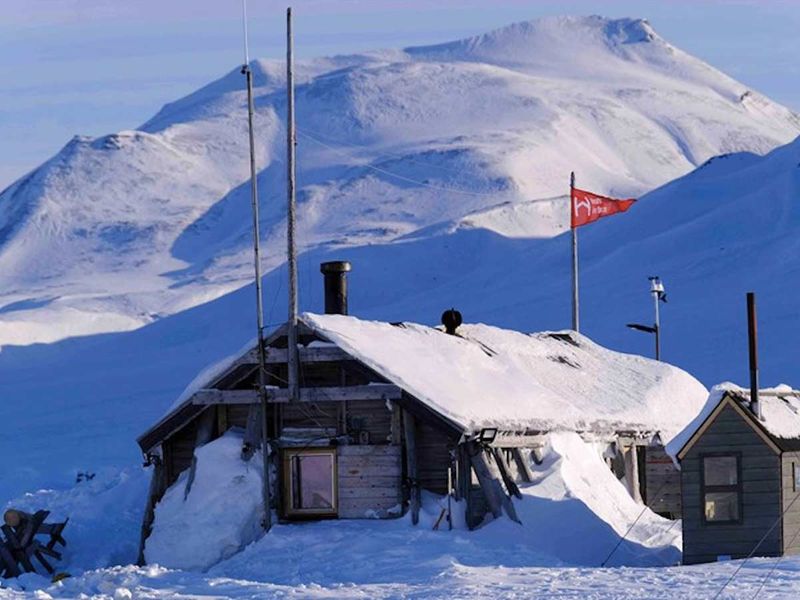
The 12-square-metre tappers cabin on the Norwegian archipelago Svalbard has no running water or electricity. Credit Hearts in the Arctic
So, if Matt Damon is happy living in Dalkey, Ireland during the lockdown, he’ll be doubly grateful he isn’t stuck in the High Arctic, like a couple of female explores.
With only reindeer and polar bears for neighbors, two women Arctic explorers are enduring the world’s most extreme lockdown conditions with no clear end in sight as the COVID-19 pandemic leaves them stranded.
Sunniva Sorby, 59, and Hilde Falulm Strom, 52, co-founders of the Hearts in the Ice polar education campaign, set off in August to the Svalbard archipelago, located between Norway’s mainland and the North Pole, to collect environmental data and raise awareness about climate change. They were due to return this month but the vessel designated to pick them up was canceled amid global travel restrictions.
“There have been tears,” Strom told NBC News during a video call from her post in the Arctic Circle. “You are scared and you feel small in this big environment.”
The pair — the first women in history to overwinter in the Arctic without a male team member — are settled in at the remote Basembu trappers cabin — built in the 1930s for whalers — about 170 kilometres from any other people.
Strom, a Norwegian, has spent more than 22 years living in the far north leading a variety of Arctic expeditions, while Sorby, a Canadian, spent 23 years working as a guide and historian in Antarctica.
AGGRESSIVE POLAR BEARS
Their collective experience is reassuring, they said, and has helped them navigate the challenges of storms, aggressive polar bears and endless hours of darkness. Climate change is affecting the Arctic faster than the rest of the planet, with warming happening at a rate double the global average.
As citizen scientists, they have been collecting weather and wildlife data, monitoring clouds, the aurora borealis, sea ice and organisms for several international agencies, including the Norwegian Polar Institute and NASA. The project is funded by a range of donors and sponsors from around the globe.
They’ve tested an array of new technology, including electric snowmobiles, and conveyed their results to not only scientists but also more than 5,000 children through online workshops.
Their daily chores to simply survive also involve a lot of work collecting firewood, and ice for water, since there is no indoor plumbing. Solar and wind power fuel the rest of their activities.
Leaving their 12-square-metre cabin is a production. They have to don more than 12 kilograms pounds of clothing to shield them from the elements, plus carry a flare, a Swiss Army knife and a rifle.
“It’s not just a stroll. We have to go out prepared for the worst,” Sorby said.
NAVIGATING THE SOLITUDE
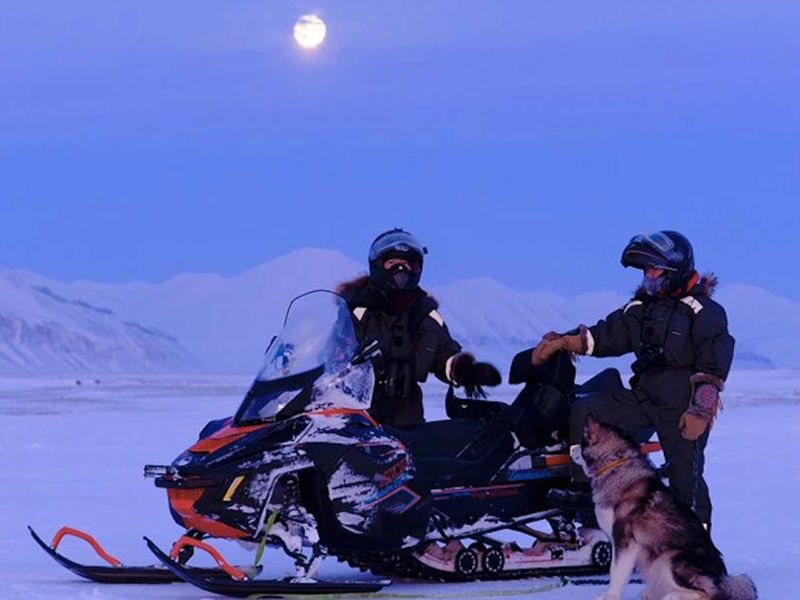
Having only each other for companionship apart from their calls to the rest of the world, they’ve navigated the solitude by maintaining a routine of sleeping regular hours, keeping active and doing normal activities such as watching movies, dancing and cooking.
“Neither one of us have lived this long with anybody 24/7,” Sorby said, adding she imagines people living in lockdown around the globe are facing similar tensions.
While coping with the distance from their loved ones by immersing themselves in their routine and the awe of their surroundings, they said the unpredictability of the environment has posed unique challenges.
On one occasion, a polar low — referred to as Arctic hurricane — ripped open the door to the cabin, leaving the pair scrambling to stay sheltered, unable to make repairs until the winds died down. In another instance, a pileup of snow overnight made it impossible for them to open the door, leaving them to resort to climbing out a window.
“We were so thankful we do yoga,” Sorby said of the narrow escape.
Although well stocked with supplies, they’re rationing some of their food given the uncertain length of their stay. They’re planning for a re-supply of essentials and equipment, anticipating they won’t leave the site until September and there remains the chance they’ll have to stay another winter.
A SILVER LINING
At a time when lockdowns have postponed research projects and disrupted climate data collection around the globe, they see the extension of their work as a silver lining, delivering welcome information to the scientific community.
“They have very little understanding what’s underneath the sea ice and we can continue collecting that for them, which gives them a big understanding around biodiversity and what’s happening in the ocean with the ice loss up here,” Sorby said.
Their mission has significant social implications, as well, especially since they have marked the first time that women have passed the winter in the Arctic without the presence of a man.
With that in mind, they decided to add personal flair to the experience, both packing a little black dress among the essentials in order to throw celebrations throughout their stay.
“We dressed up for Christmas with our heels and our dresses outside with our rifles over us. It was ice cold,” Sorby said.
More significantly, they said it marks women’s leadership in the fight against climate change. “Mother Nature needs her daughters and we have answered the call,” she said.
OLD SMARTPHONES USED TO CONNECT THOSE ISOLATED IN LOCKDOWN
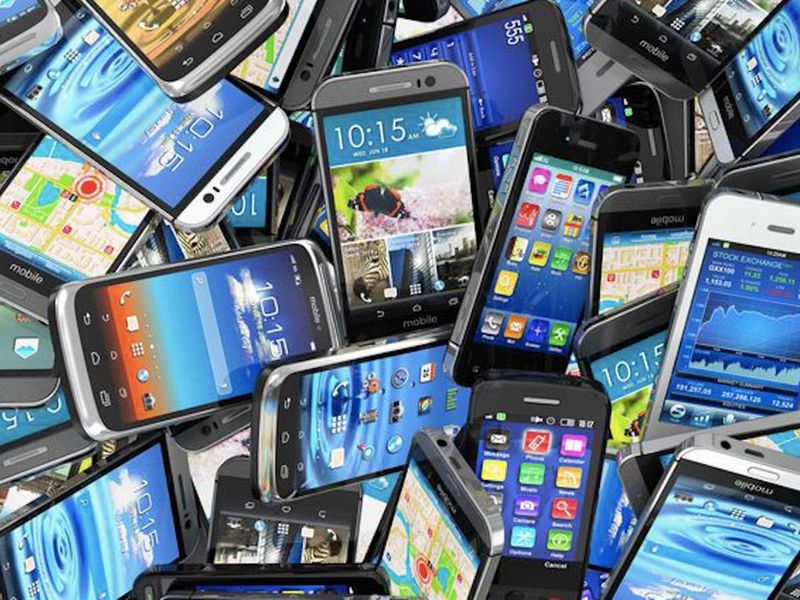
For every smartphone in use, another four are sitting idle. Credit Instagram
It’s estimated that right now, there are nearly 2 million Britons who are living through lockdown without internet access.
Personally, I couldn’t last ten minutes, never mind ten weeks.
Now, an environment charity is joining forces with a major mobile network in the UK to try to supply old or unused mobile phones to people who are digitally unconnected during lockdown.
Hubbub Foundation UK suggests that for each smartphone currently in use, four phones lie unused and it is teaming up with O2 to put them in the hands of those who are digitally excluded.
The scheme, called Community Calling, has been launched in Southwark, London, but with as many as 1.9 million people lacking internet access, if it proves effective it could be rolled out to elsewhere in the UK.
“Community Calling offers a simple way to get unused smartphones to people who need them most during the current pandemic, allowing them to access essential services, to educate their kids or to stay in touch with loved ones,” says Gavin Ellis, director and co-founder at Hubbub. “Plus, it has the bonus environmental benefit of avoiding electrical waste going to landfill or incineration.”
LIVING IN POVERTY OR WITH ADDICTION
Schemes like this can’t come soon enough for Matt Twynam. Up to the coronavirus pandemic, he was being supported by the Choir With No Name charity, which works with people who are, or were, homeless in London, Brighton, Liverpool and Birmingham. Choir members may also have a learning disability, mental health issue or addiction, or they may simply be older or live in poverty.
Before lockdown, rehearsals with the choir provided Matt with his only social contact in any given week. Now, those rehearsals have gone online, and Matt – who used to be homeless – has no smartphone and no access to the internet.
“It’s eight weeks now, and it’s a long time to be cut off from something like the choir and all your mates,” he explains. “A lot of people tell you they feel like they’ve lost without their smartphone. Well, for me, when you lose the choir, it feels like my right arm has been cut off. It’s something I look forward to every week – to sing for two hours, have a meal together prepared by the volunteers for us, having a chit chat, and then instantly looking forward to rehearsals again next week.”
What a marvelous programme, but I’m still blown away that there are four old phones sitting idle for ever one in actual use. I just have two and they’re both active.
MARINE LIFE THRIVING BECAUSE OF COVID-19
I was intrigued to read that researchers in Canada are reporting that a decrease in marine traffic because of the COVID-19 pandemic is creating quieter waters for sea life. And the scientists say this decline in ocean noise can allow marine life to interact with one another and potentially reduce their stress levels.
We might be stressed during lockdown – but sea life is thriving. About a month ago I blogged here that some whales were playing in the waters off Arrecife in Lanzarote, Spain, where I live for part of the year. They hadn’t been spotted that close to shore in decades.
Andrew Trites, the director of the University of British Columbia’s Marine Mammal Research Unit said less noise pollution presents scientists with the opportunity to learn more about sea life and more importantly allows whales and other acoustic animals to live comfortably.
“They are very sensitive, particularly those who use acoustics to find food and to stay in touch with members,” he told CTV News.
Oceanographer David Barclay from Dalhousie University says the decline of sound pollution is roughly down by 50 per cent.
“It’s been getting quieter at a faster rate in the last month. We are seeing a decrease in about four dB (decibels), which is about half, 50 per cent reduction,” Barclay said.
PAPER UNDER ACADEMIC REVIEW
Barclay found this decline using sound monitors off the west coast of Vancouver Island and in the Georgia Strait. His findings were first published in a scientific paper and are currently under academic review.
Similar research was conducted after the 9/11 attacks in the US. Researchers found that the drop in sea traffic resulted in a dramatic decline in stress hormones for the North Atlantic right whales. Those mammals are very sensitive to noise as they use low frequency sounds to communicate with one another. However, if their acoustics are hindered by other frequencies, high or low, they can have difficulties communicating and protecting themselves
Researchers, such as Valeria Vergara, hope these studies will open up new ways to reduce noise pollution and aid the many endangered animals underwater.
Vergara specialises in Canada’s endangered Saint Lawrence Belugas, which are down to only 800 in the wild. She says that noise is one of the main factors that prevents these whales from recovering.
“One of the reasons for their decline or failure to recover is noise,” she says.
MOTHER DELIVERS TWINS WHILE IN A COMA FROM COVID-19
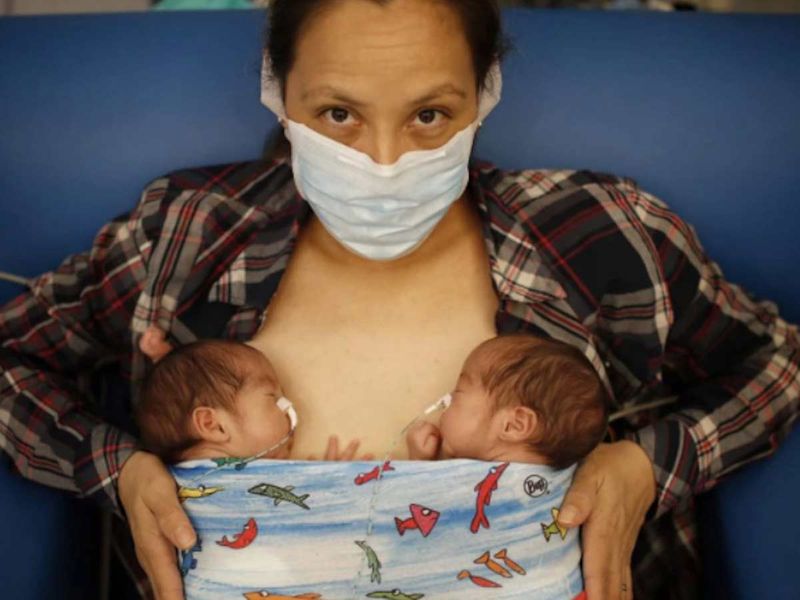
Here’s a story from Spain that will make you feel good. I was talking to some friends there and they were saying it’s all over the local media there, and I tracked down a version from El Pais, the Spanish media outlet.
When Mili América Antelo woke up in here hospital bed,, she couldn’t remember a thing; nothing about her 11 days in an intensive care unit (ICU) due to COVID-19, nothing about her pregnancy – and nothing about the delivery of her twin daughters, Ayma and Ayla.
When she came to in Vall d’Hebron Hospital in Barcelona, “four doctors came and asked, ‘Do you know you have given birth?’ But I didn’t know anything. I couldn’t remember being pregnant or giving birth,” explains Mili, 40. She was in a terrible way, with severe respiratory failure, and had to have a cesarean section at week 28
When she opened her eyes and found herself alone in a room, she had no idea where she was. She tried to get up, but she was too weak to even sit on the bed. Nurses in personal protective equipment came and went from time to time, and Mili was confused and wondered where her husband was and why he wasn’t with her. “All I could think was that my husband didn’t want to see me,” says Mili. “I asked him why he wasn’t with me and he said he wasn’t allowed because of COVID-19. But I didn’t understand anything.”
LAST MEMORY WAS ON MARCH 13
The last thing she remembers was her husband coming back from a trip on March 13. They chatted while he unpacked, and then nothing – her mind went blank. From what she has been told, she knows that a few days later she started to have contractions and went to the emergency ward, which turned out to be a false alarm.
The next day, she experienced breathing problems and was back in the ward again. It was March 27 – the height of the pandemic; she was diagnosed with COVID-19-related pneumonia and admitted to Vall d’Hebron hospital.
The next day, she was transferred to the hospital’s pediatric intensive care unit, which had been allocated to pregnant women with the virus.
But Mili’s condition was deteriorating by the day.
“She was in a terrible way, with severe respiratory failure, and had to have a cesarean section at week 28,” explains Felix Castillo, the head of the hospital’s neonatal unit. Ayma and Ayla were born on March 29 weighing just one kilogram each. Mili and her daughters were all intubated – Mili to help her fight the virus that was attacking her lungs, and the premature babies to help them fight for their lives outside their mother’s womb.
‘THEY EXPLAINED I HAD A STROKE’
Mili was taken off intubation a week after her daughters were born and moved, on April 8, to a room on the ward where she was told what had happened to her. “They explained that I had had a stroke; that they had had to bring the birth forward, but that the girls were fine,” she says, adding that her response was: What birth? What girls?
“It’s the result of being sedated for 21 days, with very powerful drugs,” says Castillo. “She has become disoriented and has no short-term memory.”
According to Joan Balcells, head of the pediatric ICU where Mili was treated, “a period of disorientation is common after the sedation wears off. Between 25 and 30 per cent of patients suffer from it but it improves after a few days. What is more striking is the amnesia prior to admission. A small lesion was detected on the magnetic resonance, which was classified as a possible stroke, but I’m not sure that this could interfere with memory.
“All I could think was that my husband didn’t want to see me,” Mili says
Mili hung a picture of her babies lying in their incubator in her room. “It really affected me when I saw photos of them – the girls being so small, intubated, with the oxygen,” she says.
SPECTACULAR ENCOUNTER
It was a month before she could see them in person. “She went in when the twins were one month old and the encounter was spectacular, ” Castillo says
The twins have tested negative for COVID-19 four times – on the day of their birth, after 24 hours, after five days and after two weeks. Mili has since beaten the disease and her husband, after an obligatory spell in quarantine, has been able to return to the hospital to be with her and his daughters.
Ayla and Ayma still have a few days left in the incubator and four or five weeks in the hospital before they can go home. Mili visits them every day for direct skin-to-skin contact, which was done by nurses and auxiliary staff in her absence.
“It’s better if the mother does it,” says Castillo. “It is far more calming for the babies.”
The hospital has had to bring forward the deliveries of five pregnant women with COVID-19 while another 20 have reached full term. “If the mother’s condition is such that the baby may be suffering and there is danger, we have to get the child out sooner,” says Castillo.
Mili, meanwhile, is still recovering from her ordeal. She was discharged on April 21, almost a month after being admitted to the hospital, but she is still feeling the after-effects.
“It’s like being in a haze,” she says. “I struggle, I forget things.”
MEME OF THE DAY
This was shared with me by my cousin Gus, who lines in Windsor, Ontario. He’s retired and seems to have a lot of spare time on his hands, which is why I’m inundated with his postings on Facebook.
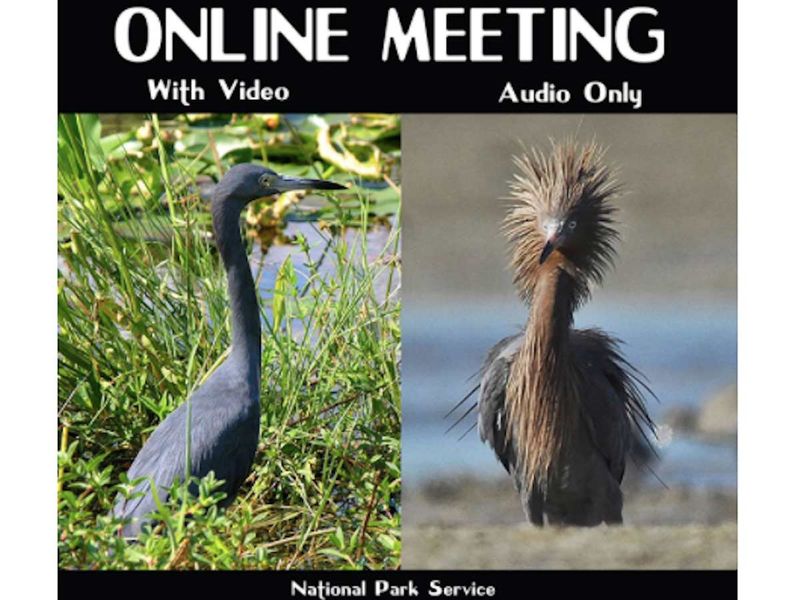
TAKING STOCK
HOW I’M PRETENDING TO GROW £10,000 IN PLAY MONEY
Well, that was a day to forget. Everything turned red, leaving me behind £429.40 from where I stood yesterday and pushing my returns so far from 22 per cent on Wednesday to 17.6 per cent on Thursday. There’s one more day in the trading week in London, and hopefully I can get back above the 20 per cent mark.
A reminder that this is all pretend, I started out in lockdown with £10,000 – about Dh45,000 to invest on the London Stock Exchange, I don’t pay for trade and I can only buy or sell when the market is closed. There’s no minimum on the amount of stocks I can buy, just as long as I can afford them.
This is how I stand after Thursday
Net worth: £11,756.48
Diageo, 100 shares: £2695.50
Ocado, 100 shares: £1956.00
Drax, 2,600 shares: £5122.0
PowerHouse 1,200 shares: £1,968.00
Cash in hand: £14.98
£ loss on last trading day: £429.40
% Gain overall: 17.6 per cent
£ Gain overall: £1,756.48
UNMASKING THE HISTORY OF THE MASK
I love history. I think it’s fascinating. I love that we can learn so much from what went in the times before and the people who lived there. That’s why I was fascinated to read that quarantines, contact tracing, and other measures adopted by governments today to slow the spread of the new coronavirus all echo plague responses over the centuries.
Today’s efforts to supply personal protective equipment for medical staff and debates about whether to wear masks in public reflect evolving ideas about face coverings as our understanding of contagion develops.
The idea that diseases could be transmitted from one sick person to another has been around at least since the 1500s “as a serious medical theory”, says Yale professor William Summers, an expert in the history of medicine.
But it was not until the mid-1800s that scientists identified microbes and developed “germ theories” to explain the mechanics of infection.
Before then, “masks for contagion control were more in the nature of amulets to frighten away evil influences,” Summers says.
COMMON IN OPERATING THEATRES
They were already becoming common in operating theatres by the 1890s, when a plague emerged in Hong Kong and spread across the globe.
The pathogen arrived in Manchuria in – where Russia, Japan and Imperial China were jostling for control – sparking fears it could hitch a ride on newly-built rail lines to Beijing, or even as far as Europe.
It was a terrifying pestilence with a case fatality rate nearing 100 per cent.
“It killed everyone it infected, and it killed them within 24 to 48 hours from the first symptoms,” explains Christos Lynteris, a medical anthropologist at St Andrews University in Scotland. “That was apocalyptic.”
‘PLAGUE FIGHTER’
Among the specialists sent to lead the response was a young doctor named Wu Lien Teh.
Born in Malaysia and educated at Cambridge, Wu struggled to be taken seriously as he attempted to convince colleagues the plague was not only transmitted by fleas on rats, like bubonic plague, but also that it was spreading from one human being to another.
“What Wu suggested is that someone who has pneumonic plague, and his or her lungs are infected, can transmit this disease to others directly in an airborne manner without the mediation of fleas,” Lynteris says, adding “that was really innovative – and scandalous – at the time.”
It also meant people would need masks to block the infection.
Those leading the public health response had two major problems, says Summers, the author of a book about the Manchurian plague.
The first was political. “China was falling apart, and Manchuria, being on the periphery of the Qing Empire, was even more chaotic,” Summers says. The second was the need to convince a public accustomed to “traditional folk medicine” of the merits of a science-based approach.
BEMOANED PUBLIC FATALISM
In his autobiography “Plague Fighter”, Wu bemoaned public fatalism. “It needed something startlingly tragic to jolt these people out of their lethargy,” he said. And that came with the death of prominent French doctor Gerald Mesny.
According to Wu’s version of events, Mesny dismissed the younger doctor as a “Chinaman” and refused to believe his theory that the plague was pneumonic.
Mesny then visited a hospital without covering his face and died within days – and suddenly, masks were in high demand.
“Almost everyone in the street was seen to wear one form of mask or another,” Wu wrote.
Images of the Manchurian plague show medical staff swathed in thick bandages covering their entire heads. Hooded sanitary workers had cloths wrapped tightly around their mouths and noses as they transported bodies to pits hacked out of the ice-stiffened earth for cremation.
Wu “tried to develop how the strings would work so that you could carry a corpse and the mask would still be on your face,” says Lynteris, describing the push to systematically expand face protection to at-risk workers and members of the public as “completely unprecedented”.
The nascent use of photography in world newspapers also drew attention to the masks, helping to define the way we imagine epidemics, he said.
FATAL 'MIASMAS'
For hundreds of years – long before the concept of germs – people have covered their faces to try to ward off disease.
During the bubonic plague in the Middle Ages, some European doctors wore beak-like masks to protect against “miasma”, imagined as air pollution linked to rotting matter and bad smells.
“It was thought that dangerous atoms would not adhere to leather trousers and gowns made of waxed fabric,” says Yale historian Frank Snowden, in his book “Epidemics and Society: From the Black Death to the Present”. "A wide-brimmed hat could defend the head, and a mask with a protruding beak extending from the nose could carry aromatic herbs that would protect the wearer from the fatal miasmatic smells."
Plague scorched through communities, killing rich and poor alike and causing huge economic and social damage. Terrified, people sought divine explanations – and scapegoats. There were waves of anti-Semitic violence, prostitutes were rounded up, witchhunts launched, foreigners cast out – and miasma theories continued to dominate until the 1800s.
WORK BY LOUIS PASTEUR
It was not until the latter half of the 19th century that germ theories developed by France’s Louis Pasteur, Germany’s Robert Koch, and others – began to revolutionise the understanding of infection.
Imperial China remained dismissive of scientific advancements from outside.
But that changed with the plague in Manchuria.
“It marked China as a champion of medical modernity,” Lynteris says.
During the SARS epidemic in 2003 masks became everyday items in affected places like Hong Kong.
Masks were also used widely in the United States in the 1918 flu pandemic, which killed tens of millions of people, but Lynteris says societies in the West have a “very weak memory” of that crisis.
“So, the mask being introduced now in Europe, or the Americas, that's a completely new experience," he offers.
COVIDIOTS, YOBS AND GOONS
Here’s my daily collection that serves as a reminder covidiots are like drivers but have their brains clamped instead.
COVIDIOTS SCAM UK FURLOUGH SCHEME
If there’s a chance for a covidiot to scam a quick quid, they will – proving once more what a selfish lot of gits they are.
The British government has received nearly 800 reports of suspected fraud of its job retention scheme launched less than a month ago.
The tax authority, Her Majesty’s Revenue & Customs (HMRC), which is responsible for overseeing the furlough scheme under which the government pays 80 per cent of the wages of those who cannot work because of the coronavirus lockdown, said it was assessing the fraud reports and anyone with further information could make a report online.
The government hotline for reporting fraud is currently not operating, because the vast majority HMRC staff are working from home and it is not possible to divert such calls to their mobile phones.
HMRC said it was “committed to ensuring the tax systems we operate are used fairly and efficiently, and where necessary will take action to ensure compliance with the relevant rules, regulations and legislation that govern the UK taxation systems. We value all the information provided to us by members of the public aimed at helping us achieve that goal”.
The spokesperson said that HMRC would assess each report and would help put right “a genuine mistake”. They added that reports of fraud were only one way that claims were checked and payments may be withheld or would have to be repaid if they were based on dishonest or inaccurate information.
“We won’t hesitate to take criminal action against the most serious cases,” the spokesperson said.
COVIDIOTS STEAL CONTACT-TRACING APP DETAILS
I’ve written it here before and will likely do again – some covidiots are complete scum.
Members of the British public have been alerted to a scam in which fraudsters use a bogus version of the UK’s contract-tracing app being trialled now on the Isle of Wight off the southern coast of England.
The Chartered Trading Standards Institute (CTSI) says it had evidence of a phishing scam that uses a text message to try to fool people into believing they have been in contact with someone who has tested positive for coronavirus.
The trials of the vital National Health Service tracing app are critical – and it will hopefully be rolled out across the rest of the country later this month.
The bogus text messages the CTSI has seen appear to have been sent by an official source associated with the app, directing recipients to a website that asks for their personal details. Scammers can then use the information to gain access to bank accounts and commit other forms of identity fraud.
Scams related to the coronavirus have increased since March, and Action Fraud reports that fraudsters have stolen more than £2 million so far. Experts fear more rackets will be unleashed once the contact-tracing app is launched nationally.
‘SCAMMERS MODIFY THEIR CAMPAIGNS’
“We have witnessed a surge in Covid-19-related scams since lockdown began,” explains the CTSI’s lead officer, Katherine Hart. “This evidence is yet another example of scammers modifying their campaigns as the situation develops. I’m especially concerned that scams themed around the contact-tracing app are already appearing, even though the official NHS app has only been released in a limited testing phase on the Isle of Wight.
“These texts are a way to steal personal data and may put the bank accounts of recipients at risk. If anyone receives texts or other kinds of messages like this, they should not click on any accompanying links, and report them to Action Fraud.”
According to the Local Government Association in the UK, fraudsters have gone into overdrive in the last seven weeks to exploit the public’s fears about the virus and the fact that they are stuck at home.
Some local authorities have reported a 40 per cent jump in complaints about fake items and other scams related to COVID-19 since early March.
More than 500,000 unusable face masks and a garage offering fake testing kits are among the hundreds of frauds trading standards officers have investigated since the start of the lockdown.
QUESTIONS AND ANSWERS
I’m not an expert, but I might be able to help you make a bit of sense of this. And we can all get through it together. Isn’t this what this is all about.
Send your questions for me to Readers@gulfnews.com.
That’s it for now. Let’s check in with each other tomorrow. I have used files from Reuters, AP, DW, SkyNews, Twitter and other European and North American media outlets in today’s blog. And remember to stay safe.
Mick O’Reilly is the Gulf News Foreign Correspondent based in Europe








